Emergencies are almost always unexpected. It might be an earthquake, a hurricane, a fire, a protracted power outage, or something else. We don’t always immediately know what to do in such situations.
But it’s wise to have emergency equipment and supplies ready and available. You likely won’t have the time – or the ability – to go looking for provisions during a crisis.
Ensuring you’re prepared for an urgent situation isn’t rocket science. All you need to do is organize the gear and fill a few storage bins with basic necessities.
You’ll need a first aid kit, water, a flashlight, of course. Many people also wisely include basic personal-hygiene items like toothbrush and toothpaste, soap, and diapers.
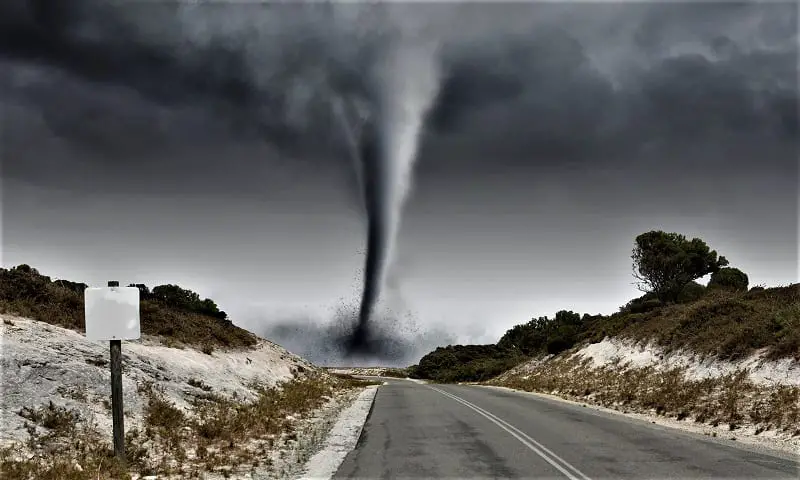
Contents
- 1 Emergency Equipment and Supplies
- 1.1 An Adequate Supply of Water
- 1.2 Emergency Food Supplies
- 1.3 Hand Crank/Solar Powered Radio
- 1.4 A Hand Crank/Solar Powered Flashlight
- 1.5 Emergency Lamp
- 1.6 Emergency Thermal Blankets
- 1.7 First Aid Kit
- 1.8 Portable Water Filter
- 1.9 Multi-Tool Army Knife
- 1.10 Paracord Bracelet
- 1.11 Two-Way Radios
- 1.12 AA Batteries
- 1.13 Heavy Duty Garbage Bags
- 1.14 Duct Tape
- 1.15 When Disaster Strikes …
Emergency Equipment and Supplies
While considering emergency preparedness, you may be tempted to buy a ready-made emergency kit. Those kits will cost you anywhere between $70 to $200, according to the New York Times.
Unfortunately, experts say you’ll be hard put to find one that’s worth that much money. You’re better off gathering your own emergency provisions.
How you choose to prepare for an emergency is up to you. But we’ve rounded up a list of basic items you should have in case of a large-scale emergency.
An Adequate Supply of Water
Earthquakes can destroy aqueducts and pipelines. Hurricanes, typhoons, and bushfires can disrupt the delivery of basic utilities and cause the contamination of municipal water supplies.
Given those risks, experts suggest that stockpiling a 10- to 14-day supply of water is a reasonable target. The best way to ensure you have an adequate and transportable supply is to get some water storage containers.
Rigid plastic water containers consistently perform better than opaque collapsible ones, according to the experts at Wirecutter. They’re more durable and leak-resistant. They also better-protect your water against bacterial growth.
<!– wp:common/insert-amalinkspro-shortcode {“shortcode”:”[amalinkspro type=\u0022cta-btn-css\u0022 apilink=\u0022u002[lasso\u0022 amazon_url=\u0022https://www.amazon.com/dp/B0053GVRWQ?tag=theownebuilne-20\u0026linkCode=osi\u0026th=1\u0026psc=1\u0022 link_id=\u00227662\u0022]addtocart=\u0022false\u0022 new-window=\u0022true\u0022 nofollow=\u0022true\u0022 alignment=\u0022aligncenter\u0022 link_id=\u00221027\u0022]
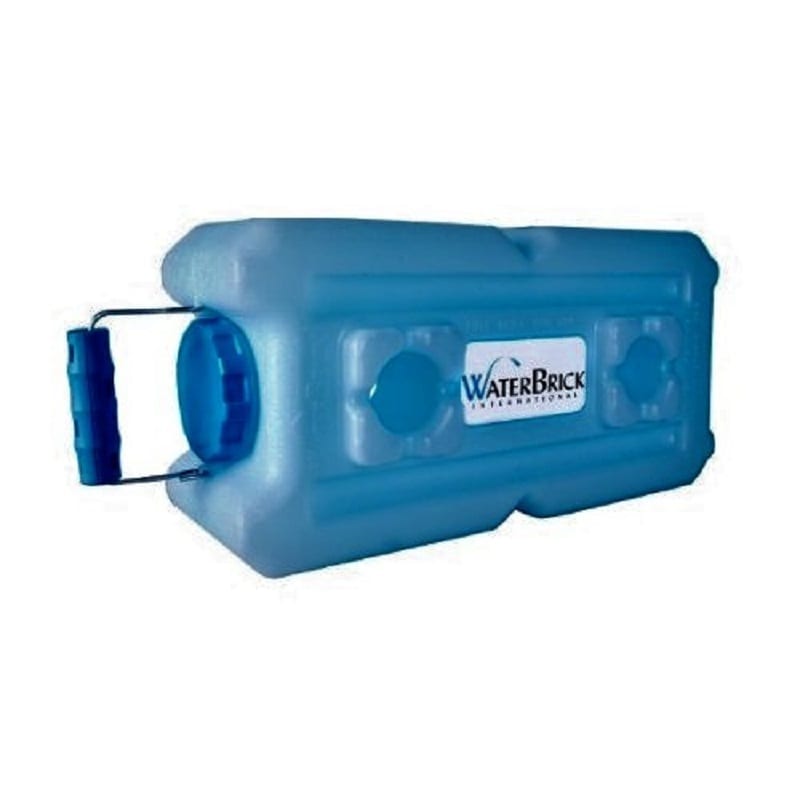
Emergency Food Supplies
The best emergency-food strategy is to stock your cupboards full of the canned and dry goods you like. Consider soups, vegetables, beans, fruits, grains, pastas, cereals, nuts, dried fruit, peanut butter, and boxed milk.
You might also want to stock up on ready-made emergency food packs. A four-gallon pail of Aguason’s emergency food supply contains 92 servings stored in 16 food pouches. You’ll get 21,020 calories with a shelf life of up to 30 years from a single bucket!
<!– wp:common/insert-amalinkspro-shortcode {“shortcode”:”[amalinkspro type=\u0022cta-btn-css\u0022 apilink=\u0022u002[lasso\u0022 amazon_url=\u0022https://www.amazon.com/dp/B00GDGGR4S?tag=theownebuilne-20\u0026linkCode=osi\u0026th=1\u0026psc=1\u0022 link_id=\u00227662\u0022]addtocart=\u0022false\u0022 new-window=\u0022true\u0022 nofollow=\u0022true\u0022 alignment=\u0022aligncenter\u0022 link_id=\u00221027\u0022]
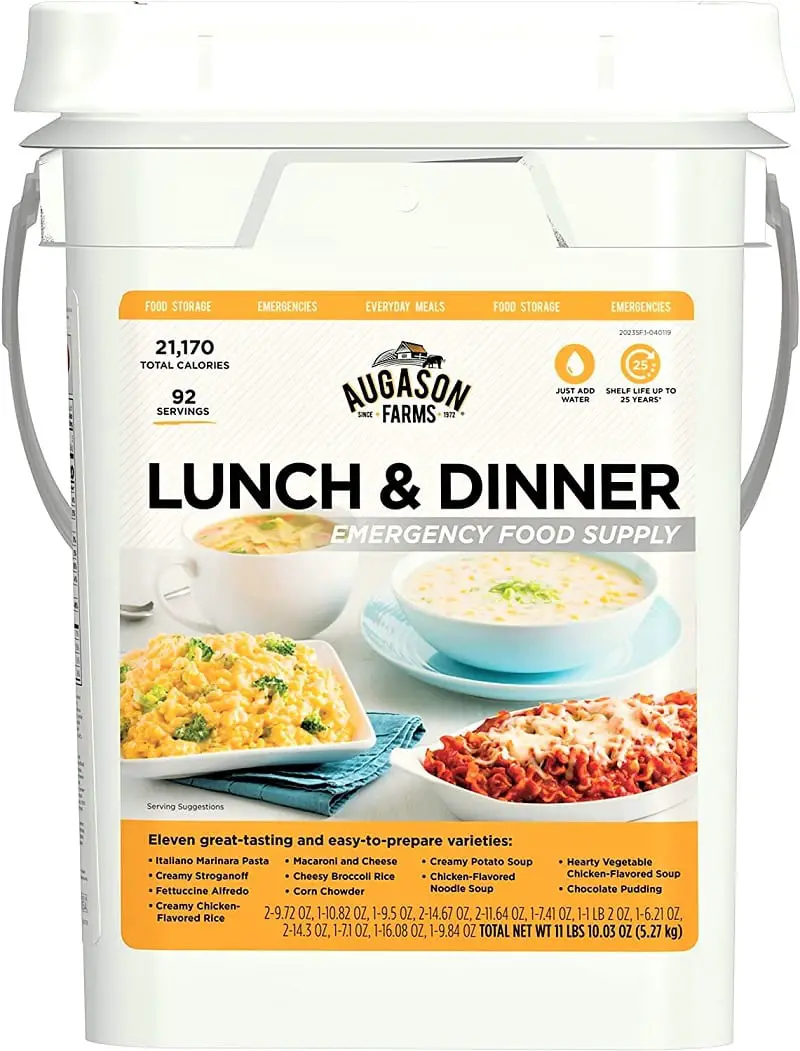
Hand Crank/Solar Powered Radio
You’ll need a multi-use hand crank and solar-powered radio like the RunningSnail emergency radio. This is a must-have in any emergency kit.
You’ll need a radio to be informed and entertained, even if the power goes out. No matter the situation you might be in, this radio will work.
This radio comes with a 2000mAh rechargeable battery that provides up to 12 hours of light or 4 to 6 hours of radio time.
You can charge it four different ways, too: solar, hand crank, Micro USB cable, or three AAA batteries. The RunningSnail emergency radio even has a USB port for device charging.
<!– wp:common/insert-amalinkspro-shortcode {“shortcode”:”[amalinkspro type=\u0022cta-btn-css\u0022 apilink=\u0022u002[lasso\u0022 amazon_url=\u0022https://www.amazon.com/dp/B01DVXDXQU?tag=theownebuilne-20\u0026linkCode=osi\u0026th=1\u0026psc=1\u0022 link_id=\u00227662\u0022]addtocart=\u0022false\u0022 new-window=\u0022true\u0022 nofollow=\u0022true\u0022 alignment=\u0022aligncenter\u0022 link_id=\u00221027\u0022]
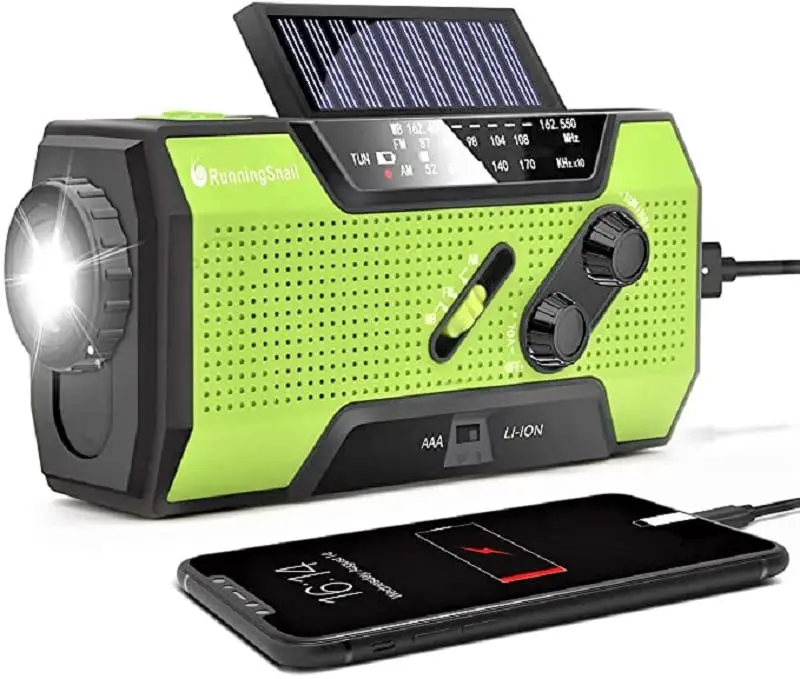
A Hand Crank/Solar Powered Flashlight
You won’t need batteries for the Stalwart rechargeable LED flashlight. This three-LED bulb flashlight runs on hand-crank technology and solar power.
One minute of cranking will get you 10 minutes of light. That means you’ll only need six minutes of winding for a full hour of power.
The Stalwart flashlight has a built-in carabiner clip, as well. You can attach it to the outside of a backpack for easy access and solar-charging.
<!– wp:common/insert-amalinkspro-shortcode {“shortcode”:”[amalinkspro type=\u0022cta-btn-css\u0022 apilink=\u0022u002[lasso\u0022 amazon_url=\u0022https://www.amazon.com/dp/B074VKQVT1?tag=theownebuilne-20\u0026linkCode=osi\u0026th=1\u0026psc=1\u0022 link_id=\u00227662\u0022]addtocart=\u0022false\u0022 new-window=\u0022true\u0022 nofollow=\u0022true\u0022 alignment=\u0022aligncenter\u0022 link_id=\u00221027\u0022]

Emergency Lamp
Being completely in the dark during a power outage can be frightening, demoralizing, and dangerous. That’s why you need to include a sturdy tabletop lamp on your supply list.
We like the Vont LED Camping Lantern because it’s versatile, bright, and adjustable. It’s also sturdy enough to survive a 10-foot fall. You can hold it by the handle on top, hang it from peg or a hook, or you can set it on a table.
Equipped with 30 bright LEDs, this compact lantern will cut through 360 degrees of darkness on the stormiest, foggiest nights. Its battery life lasts over 30 hours, too. That’s twice longer than most of its competitors in the market.
<!– wp:common/insert-amalinkspro-shortcode {“shortcode”:”[amalinkspro type=\u0022cta-btn-css\u0022 apilink=\u0022u002[lasso\u0022 amazon_url=\u0022https://www.amazon.com/dp/B00NPLSZF8?tag=theownebuilne-20\u0026linkCode=osi\u0026th=1\u0026psc=1\u0022 link_id=\u00227662\u0022]addtocart=\u0022false\u0022 new-window=\u0022true\u0022 nofollow=\u0022true\u0022 alignment=\u0022aligncenter\u0022 link_id=\u00221027\u0022]
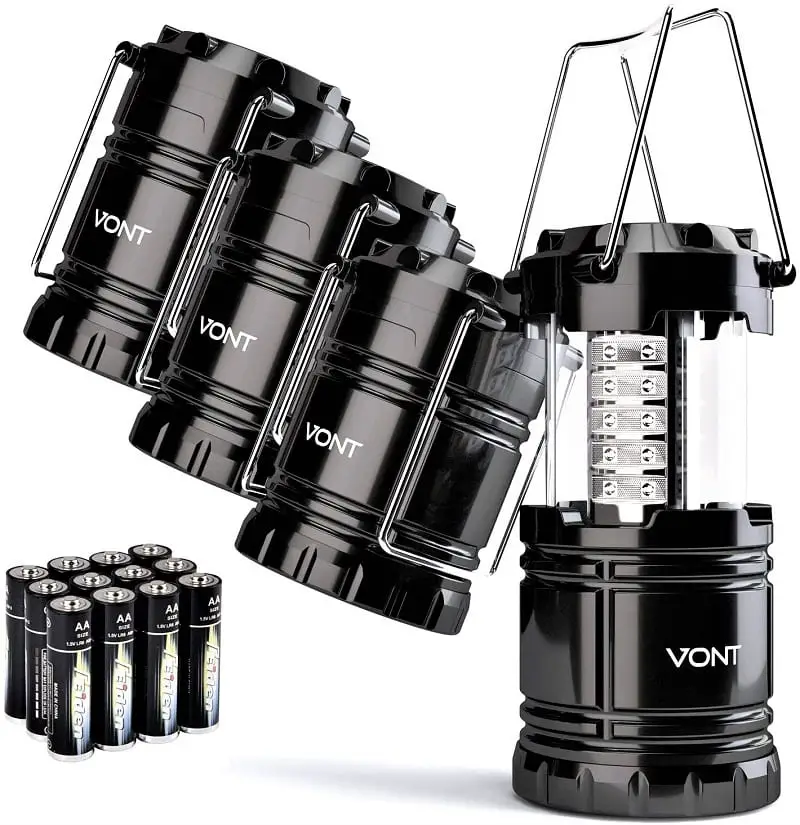
Emergency Thermal Blankets
Call them whatever you want – space blankets, mylar blankets, survival blankets, or emergency blankets. Every survival kit needs thermal blankets. These are versatile pieces of survival gear that will protect you against the elements and prevent hypothermia.
Swiss Safe thermal blankets are designed to retain to up 90 percent of your body heat. They are lightweight, waterproof, windproof, and moisture-proof. They can also be converted into emergency shelter tents if need be.
<!– wp:common/insert-amalinkspro-shortcode {“shortcode”:”[amalinkspro type=\u0022cta-btn-css\u0022 apilink=\u0022u002[lasso\u0022 amazon_url=\u0022https://www.amazon.com/dp/B07HGFCYQ4?tag=theownebuilne-20\u0026linkCode=osi\u0026th=1\u0026psc=1\u0022 link_id=\u00227662\u0022]addtocart=\u0022false\u0022 new-window=\u0022true\u0022 nofollow=\u0022true\u0022 alignment=\u0022aligncenter\u0022 link_id=\u00221027\u0022]
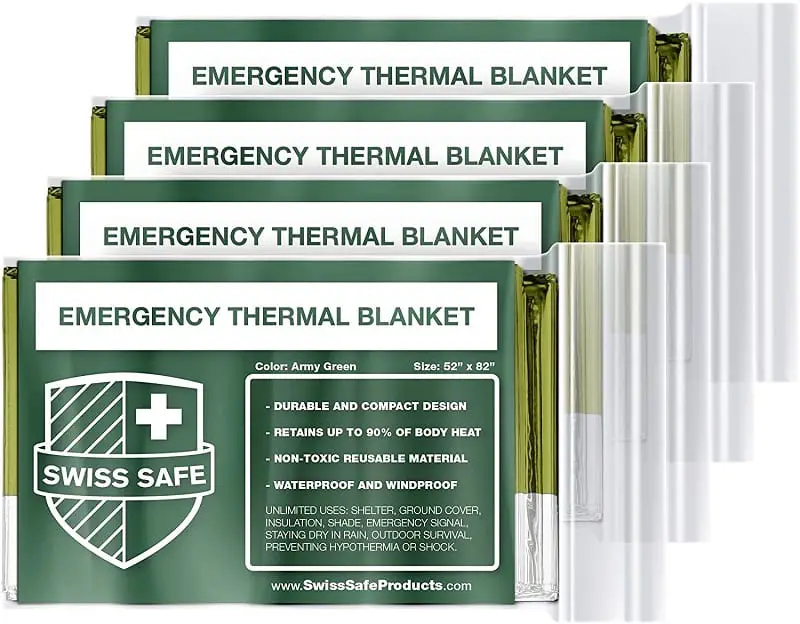
First Aid Kit
You’ll need a basic first aid kit. The First Aid Only 298 Piece All-Purpose First Aid Kit comes in a compact bag with clear plastic pockets. The kit contains several types of bandages, tapes, sponges, pads, sterilization wipes, gloves, and medical tools.
The supplies are ideal for treating pain and swelling, as well as cuts, scrapes, and burns. There are also some items for handling more serious injuries. Everything is visible when you unzip and open the bag for quick and easy access.
Do you or any member of your family take any prescription medication regularly? If so, the Red Cross advocates stashing a month’s worth of it. A disaster of any kind can disrupt supply chains. Pharmacies will also likely be closed.
<!– wp:common/insert-amalinkspro-shortcode {“shortcode”:”[amalinkspro type=\u0022cta-btn-css\u0022 apilink=\u0022u002[lasso\u0022 amazon_url=\u0022https://www.amazon.com/dp/B000069EYA?tag=theownebuilne-20\u0026linkCode=osi\u0026th=1\u0026psc=1\u0022 link_id=\u00227662\u0022]addtocart=\u0022false\u0022 new-window=\u0022true\u0022 nofollow=\u0022true\u0022 alignment=\u0022aligncenter\u0022 link_id=\u00221027\u0022]

Portable Water Filter
Be sure to include a portable water filter among your emergency gear. If you run out of water, a portable water filter can dramatically increase your chances of weathering an emergency. The best of these devices can make almost every source of freshwater drinkable.
LifeStraw’s personal water filter has a microfiltration membrane that removes 99.9 percent of waterborne bacteria, parasites, and microplastics. When properly used, a single LifeStraw can filter up to 4,000 liters of water!
<!– wp:common/insert-amalinkspro-shortcode {“shortcode”:”[amalinkspro type=\u0022cta-btn-css\u0022 apilink=\u0022u002[lasso\u0022 amazon_url=\u0022https://www.amazon.com/dp/B006QF3TW4?tag=theownebuilne-20\u0026linkCode=osi\u0026th=1\u0026psc=1\u0022 link_id=\u00227662\u0022]addtocart=\u0022false\u0022 new-window=\u0022true\u0022 nofollow=\u0022true\u0022 alignment=\u0022aligncenter\u0022 link_id=\u00221027\u0022]

Multi-Tool Army Knife
A multitools is a substitute in those instances when carrying a full tool box isn’t practical. These handy implements have come a long way since the Swiss Army knife of your childhood. Today there are dozens of similar products from several manufacturers. Some have more than 20 tools and functions.
You can use the Victronix Swiss Army Climber Pocket Knife to serve a variety of purposes. This little tool includes a pair of scissors, a can opener, and a reamer with sewing eye, among others.
<!– wp:common/insert-amalinkspro-shortcode {“shortcode”:”[amalinkspro type=\u0022cta-btn-css\u0022 apilink=\u0022u002[lasso\u0022 amazon_url=\u0022https://www.amazon.com/dp/B00004YVBA?tag=theownebuilne-20\u0026linkCode=osi\u0026th=1\u0026psc=1\u0022 link_id=\u00227662\u0022]addtocart=\u0022false\u0022 new-window=\u0022true\u0022 nofollow=\u0022true\u0022 alignment=\u0022aligncenter\u0022 link_id=\u00221027\u0022]
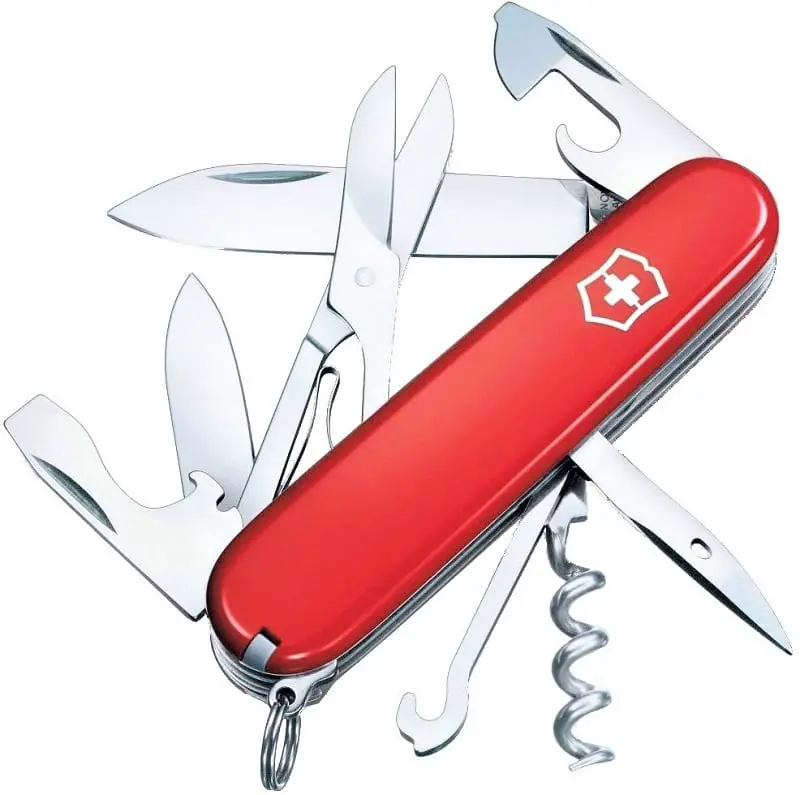
Paracord Bracelet
The Zhiye Survival Paracord Bracelet has features that will be useful if you get lost in an unfamiliar area. Not only does it have a small compass on the clasp, but it also has an emergency whistle. The latter just might bring assistance when you need it.
The bracelet also comes with a compass, a small emergency knife, and a magnesium stick fire starter. If you cut the bracelet, it unravels into more than 8 feet of military-grade paracord. The cord itself will support an impressive 550 lbs. of tension!
<!– wp:common/insert-amalinkspro-shortcode {“shortcode”:”[amalinkspro type=\u0022cta-btn-css\u0022 apilink=\u0022u002[lasso\u0022 amazon_url=\u0022https://www.amazon.com/dp/B08FY2MGN1?tag=theownebuilne-20\u0026linkCode=osi\u0026th=1\u0026psc=1\u0022 link_id=\u00227662\u0022]addtocart=\u0022false\u0022 new-window=\u0022true\u0022 nofollow=\u0022true\u0022 alignment=\u0022aligncenter\u0022 link_id=\u00221027\u0022]
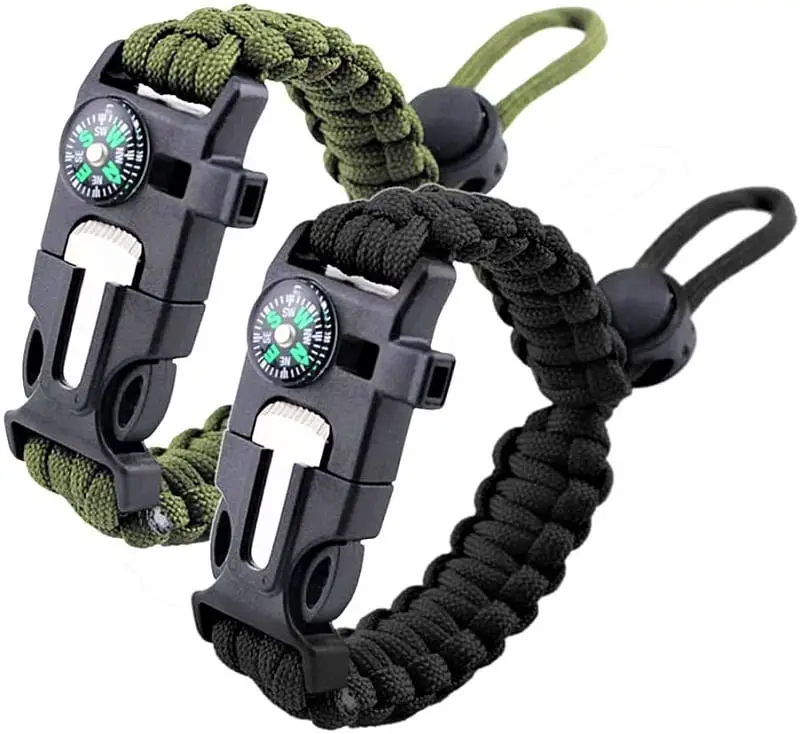
Two-Way Radios
Disasters will knockdown power and telephone lines. This would make it difficult for members of your family to communicate with each other should you become separated. Motorola T100 radios are compact, lightweight, and easy to use.
These radios utilize 22 frequency channels that allow you to communicate with other FRS/GMRS radios regardless of brand. They have a range of 16 miles and will run for 18 hours on three AAA batteries.
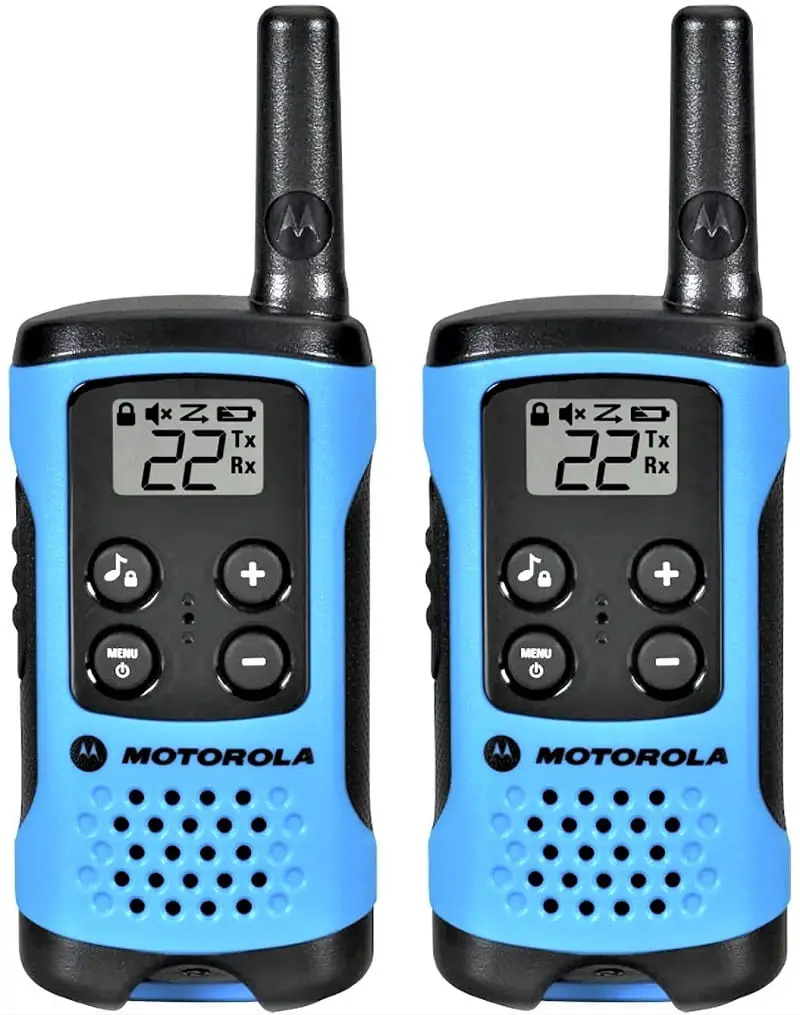
AA Batteries
You should have cost-effective, environmentally friendly rechargeable batteries to power your hardware. But rechargeable batteries soon become useless during a prolonged power outage.
That’s why it’s smart to keep a few disposable batteries on hand. Amazon Basics AA High-Performance Alkaline Batteries. These batteries are excellent for headlamps, portable radios, and flashlights.
Because they have a 10-year shelf-life, they’ll likely be fully-charged and ready to use when you need them. Their lifespan is also significantly longer than that of most alkaline batteries, too.
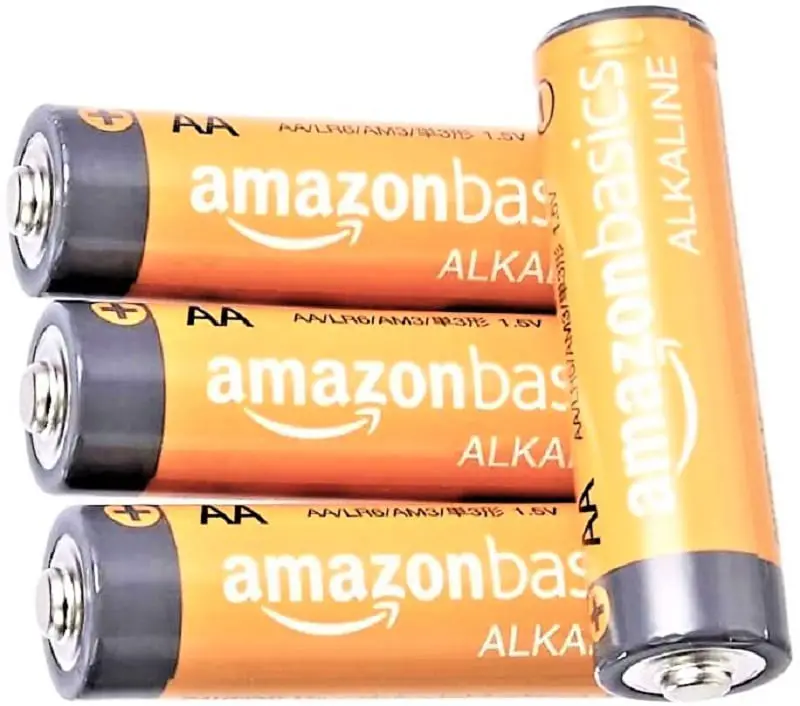
Heavy Duty Garbage Bags
Heavy-duty garbage bags belong in your kit, too. The consequences of not having access to clean water are far greater than foul odors. Keeping your home clean helps to avoid the spread of germs or infections.
You can also use the bags for hurricane cleanup, as a duffel for transporting stuff, or as makeshift ponchos. A disaster could delay municipal garbage pickup for weeks.
You’ll want to stow trash in strong bags that can be kept outside without leaking or disintegrating. Solimo tall kitchen draw string bags are a good option.
<!– wp:common/insert-amalinkspro-shortcode {“shortcode”:”[amalinkspro type=\u0022cta-btn-css\u0022 apilink=\u0022u002[lasso\u0022 amazon_url=\u0022https://www.amazon.com/dp/B07BJ49P7B?tag=theownebuilne-20\u0026linkCode=osi\u0026th=1\u0026psc=1\u0022 link_id=\u00227662\u0022]addtocart=\u0022false\u0022 new-window=\u0022true\u0022 nofollow=\u0022true\u0022 alignment=\u0022aligncenter\u0022 link_id=\u00221027\u0022]
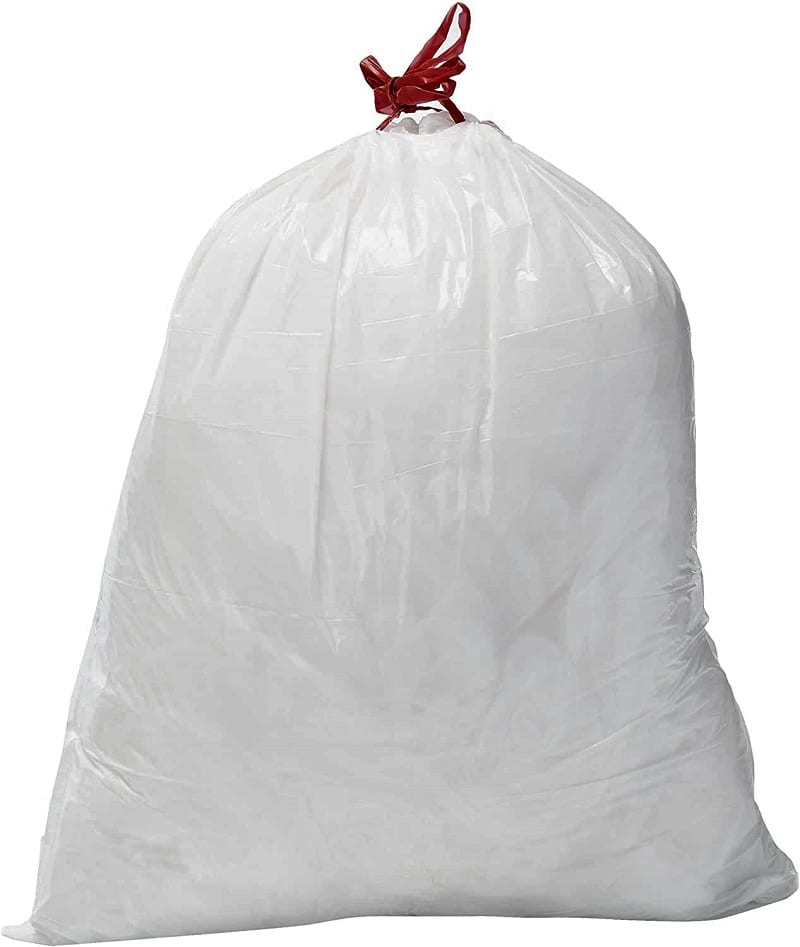
Duct Tape
Duct tape can be a crucial tool in the thick of an emergency. Gorilla Tape is the best choice, in our opinion. Compared with other brands we’ve used and tested over the years, it’s the toughest and has the strongest adhesive. Yet you can rip it by hand.
We like that it’s flexible enough to wrap around curved objects – like boots and plumbing. The tape likewise sticks to a wide range of surfaces.
We’ve used it without problems on everything from vinyl to brick! It’s excellent for mending equipment and keeping gauze in place!

When Disaster Strikes …
Emergency preparedness is about more than just assembling gear and provisions, of course. Develop a plan with your family so you know where to meet if cell services go down.
You should also participate in community preparedness activities, such as the earthquake and fire drills. Remember to fresh your emergency supplies once a year, too.
This might all seem a bit much. After all, these supplies and equipment will cost you if you don’t already have them. But trust us, you’ll sleep easier knowing that you’ll be ready when disaster does strike.




